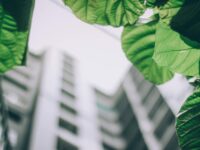The following contribution is from another author.
Water conservation isn’t just about fixing leaky taps and turning off the sprinklers when you don’t need them. It’s also about preserving the water habitats you’re currently steward for.
Maintain a Healthy Ecosystem
Lakes, ponds, rivers and wetlands are all part of the ecosystem, not separate or distinct at all. You have to think of them as being part of a larger cycle. Lake aeration is important for keeping fish healthy and keeping harmful microorganisms from taking over. Making sure that your lake’s ecosystem is healthy is important for all the ecosystems downstream and all the plants that rely on your lake for fresh water. At Karina Lakefront Maintenance, their staff has the training to transform your lakefront into one you need it be.
Consider Changes Carefully
Consequently, any changes you might be making should be carefully considered. Before you introduce a new water plant or fish, ask yourself if it’s invasive and might spread downstream. Before you add a dock, remember to check that you aren’t disrupting local habitats or introducing chemicals that might leech out of the wood and into the water as pollution. Additionally, installing a pond aeration system can help maintain the balance of oxygen levels, supporting healthier aquatic life and minimizing the risk of algae blooms, which can further affect the ecosystem.
Reduce Pollution
Pollution is a huge problem for freshwater ecosystems. Because these ecosystems are so closely connected, pollution in one stream can affect everything downstream, even potentially going all the way to the ocean. Everything from trash to lawn pesticides can cause pollution in your water, but even a lot of particulates like dirt stirred up from construction can have a negative impact. Too much dirt in the water is bad for the things that breathe that water.
Control Runoff and Erosion
A lot of times, dirt in the water is caused by erosion. Erosion is, of course, a natural part of the water cycle, but it can be accelerated by human means. Pull up a tree, and you’ve put all the dirt that used to be held together by its roots in jeopardy. All that soil could end up washing away in the next big storm. On the other end of the scale, put in an impermeable surface like concrete and suddenly the water puddles on top instead of soaking in. Runoff from impermeable barriers like that changes erosion patterns. Sometimes these changes can be destructive.
Maintaining healthy lakes, ponds and rivers is an important part of water conservation. It keeps ecosystems healthy, fresh water systems clean and usable and helps prevent waste. However big or small your nearest water feature is, make sure that you’re doing your part to keep it safe and happy.
















Retention ponds are a great way to deal with the run off and is often times the way Florida has done, which has lead to its problems with its water system